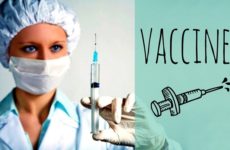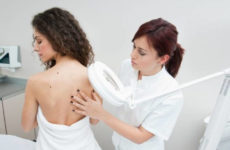Содержание:
- 1 Introduction
- 2 Causes
- 3 Classification
- 4 Ways of transmission of HPV
- 5 Incubation period
- 6 General symptoms
- 7 HPV in women
- 8 HPV in men
- 9 The specificity of the course in children
- 10 HPV and pregnancy
- 11 Photo papillomavirus
- 12 Which doctor to contact with HPV
- 13 Human papillomavirus treatment
- 14 Prevention
- 15 Vaccination
- 16 Conclusion
Introduction
HPV is a fairly common disease of viral etiology. It can be found on the skin, in the form of small formations. The virus may not manifest itself for a long time and over time, with the help of cell division, it is found on the skin.
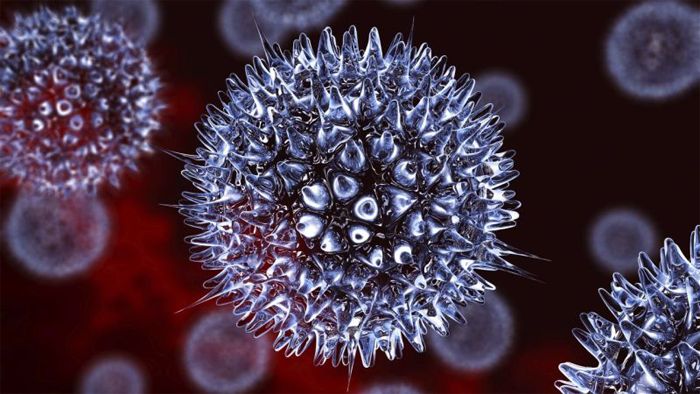
Causes
The human papillomavirus is quite easy to get. If a man or woman has contact with a virus, with weak immunity, the body cannot cope with it, and it is introduced into the body. And when a healthy person has strong immunity, he can easily suppress the bacterium and destroy it in the body.
So, the virus is infected for the following reasons:
- Bad nutrition.
- Reduced immunity.
- Frequent stress.
- Diseases that cause metabolic disorders.
- Pregnancy, against the background of hormonal changes.
Classification
It is divided according to their degree of danger.
- The safest group that does not become malignant is called non-oncogenic -1,2,3,4,5. DNA cells do not mutate. When they are detected, treatment, as such, is not required. Dermatologists do not advise removing these formations, they do not bother a person.
- The next group with a reduced degree of oncogenicity is 6.11.42–44.6 and type 11. Viruses are widespread in their activity, and a special vaccine has been developed against them. Their danger is also considered low. This group can cause pathologies if a person has a tendency to develop cancer.
Oncogenic types
The highest group is HPV -16.18 , 31.33-35.45 , 51-52.56.68-70 . For humans, they pose a threat and provoke the development of cancer. They appear on the genitals and are capable of rapid growth. And what are the HPV oncogenic type in women .
They are called anogenital. When this virus is detected, the doctors of the patient are kept under constant control. These types of strains provoke a malignant skin disease called melanoma.

Ways of transmission of HPV
It’s pretty easy to catch a virus. The most common routes of transmission:
- First is the sexual route. It was revealed that this is the HPV 16.18 virus. A high risk of infection is observed in persons who have sexual contact with different people. When a person has a regular partner, the risk of infection will be up to 20 percent. And with multiple connections – from 60 to 90 percent. When one of the partners is infected, then through sexual contact, he can easily infect the other.
- vertical transmission path. It occurs during pregnancy, childbirth or from mother to newborn child. In close contact with the baby, the mother, without noticing it, will transmit the virus. As you know, newborn babies do not have immunity at all, so they easily acquire HPV. With the intrauterine development of the baby, there is also a risk of transmission of this virus, which very often happens.
- The next way of transmission is household. The virus is transmitted even by touching an infected person. Through scratches and abrasions that are on the skin, the bacterium takes root and actively begins to multiply. When the papilloma virus is located on the mucous membrane of the lips, it will be transmitted with a kiss with a high probability of its introduction. At home, when using shaving kits, there is also a chance of getting infected.
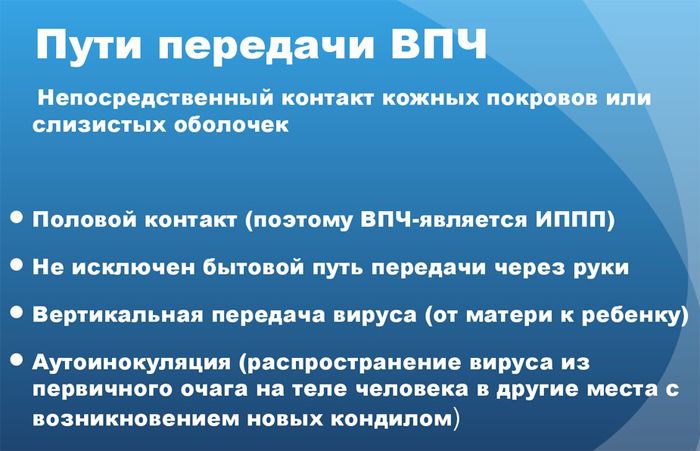
Incubation period
It implies the onset of infection and before the onset of the main symptoms. The process itself depends only on the type of infection and the ability of the body to protect itself from it.
The incubation period is quite long, it is asymptomatic, and the first signs may appear even after 30 years. Therefore, strengthening your immunity is very important not only to avoid HPV, but also other unpleasant infections that surround you in everyday life.
General symptoms
Basically, the symptoms depend on the provoking factor, it plays an important role in the body.
So, HPV manifests itself as follows:
- Burning and redness on the skin.
- Small bumps form on the skin.
- Unpleasant sensations in the genital area and frequent itching.
With HPV, formations most often appear in the following places:
- Oral cavity.
- On the hands (palms and on their soles).
- In the genital area.
In advanced cases in women, they are located on the cervix, in the vagina and also in the bladder. If we talk about men, then they have a very minimal risk of onco-factor and most often the virus occurs in a mild stage.
HPV in women
Among women, almost one in three is a carrier of the virus. For women, of course, learning about it is stressful, since with its active progression, formations appear on the skin and begin to actively multiply.
Most often, infection in women occurs at a young age and, in some cases, in childhood. As we found out, the dangerous type is the virus 16 and 18, it is able to develop an oncological disease.
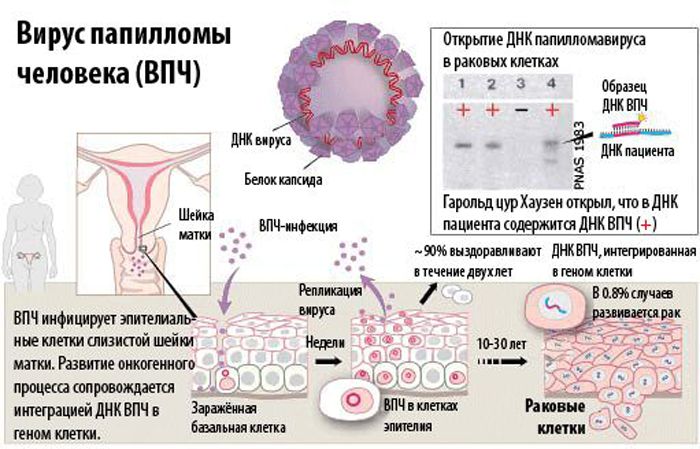
If a woman abuses the use of oral contraceptives, they can malfunction in the hormonal system and this will contribute to the activation of the virus.
For the fairer sex, the general recommendation is to visit the gynecologist twice a year. And you need to listen to the doctor and follow all the doctor’s instructions.
HPV in men
This insidious virus is also found in men, it does not depend on age. Microorganisms get on the skin with absolutely any contact. It can be a household way or an ordinary handshake.
The HPV virus does not cause significant harm to men. Introducing into the body, he waits for a certain period to activate and begin to multiply. Its manifestation will be reduced immunity. For example, after a cold, the human body weakens, and protective cells do not work in full. That’s when this insidious virus makes itself felt.
Manifestations in men are small formations in any part of the body on the skin. Small growths can change their shape and color. Of course, these manifestations should not be ignored, they can multiply and it does not look very nice on the skin. There is also a risk of injury to the formation, and this, in turn, is very dangerous and the consequences can be serious, up to oncology.
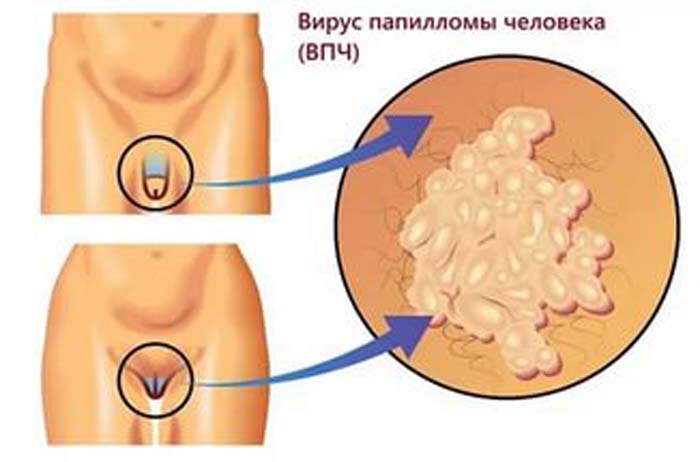
In such cases, it is worth contacting a dermatologist, he will prescribe an additional examination, and further treatment.
The specificity of the course in children
Children can also be carriers of this virus. Statistics estimate that 12 percent of schoolchildren are already infected with this infection.
Unpleasant manifestations of HPV can be located on the larynx, because of this, the child may experience hoarseness, up to losing it in advanced cases. There may also be deterioration in breathing, up to coma and later even death. Very young children are difficult to tolerate this infection, so their immunity is weakened and the virus spreads at a high speed.
This disease is easily treated with surgery. The diagnosis itself consists in examining children and then laser removal of formations on the skin is prescribed. After surgery, antibiotics are prescribed to prevent infection from entering the wound.
When detecting formations on the skin in children, you should immediately seek help from a dermatologist. He will examine you and prescribe the right treatment.
HPV and pregnancy
As you know, this infection is asymptomatic for a long time, and provoking factors exacerbate its course. One of them is pregnancy. According to statistics, expectant mothers are 80 percent infected with the HPV virus.
And when examined in a antenatal clinic, these formations are found on the skin. They are the same as ordinary people, light in color, round in shape. But during pregnancy, they increase growth, so they require strict control. Many women are worried about the risk of passing this virus to their fetus, as it is quite progressive.
Photo papillomavirus
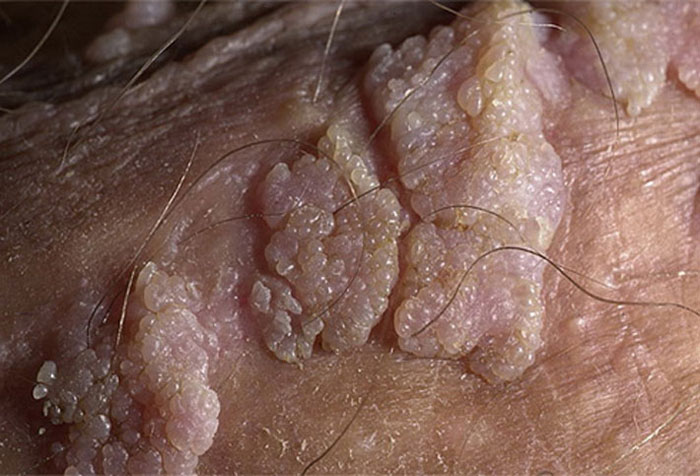
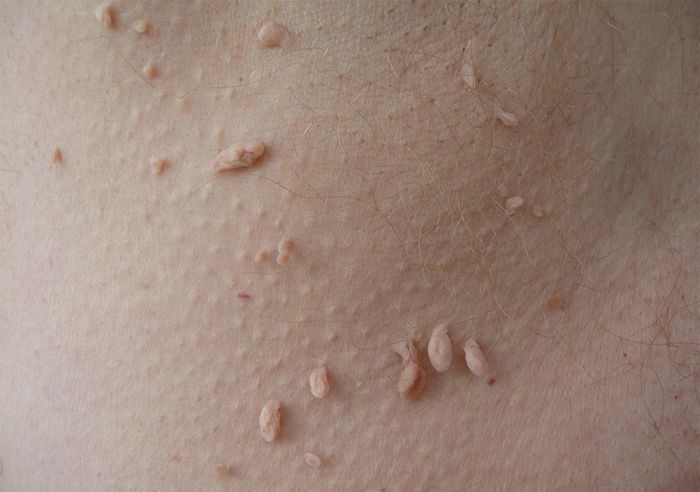
Filamentous formations
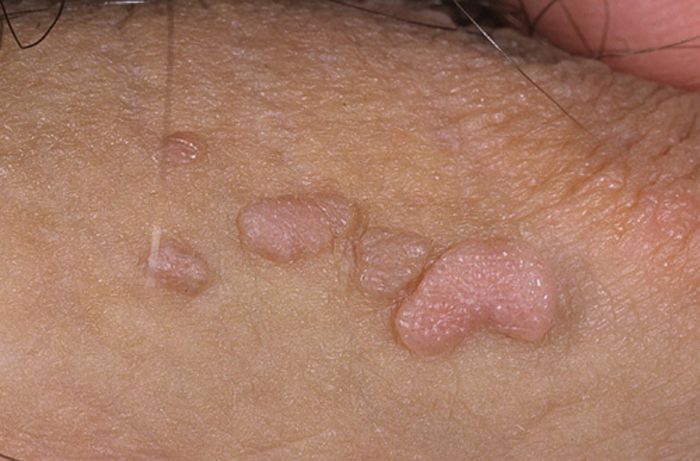
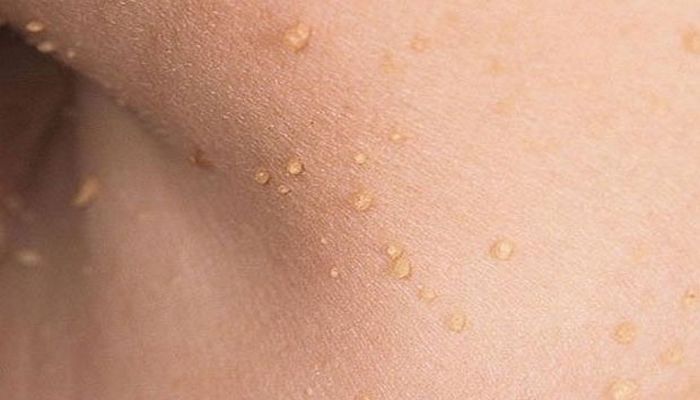
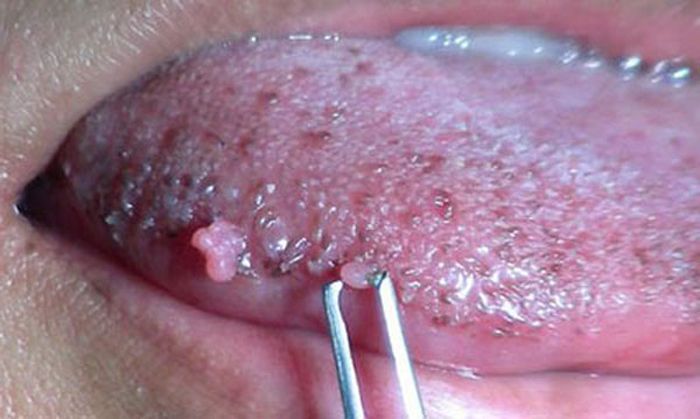
Which doctor to contact with HPV
All manifestations on the skin are treated by a dermatologist. At the appointment, the specialist collects a carefully anamnesis of a person’s life and carefully examines the skin.
Most often, people turn to a local therapist, this is also the right option, since he can also prescribe an examination of the body and refer him to a skin doctor in the future.
Dermatologists most often recommend this surgical removal with a laser.
Human papillomavirus treatment
First of all, doctors recommend increasing your immunity. This will help an excellent drug called Viferon, it is used in complex therapy. Suppresses the virus, and strengthens the immune system.
Basically, doctors suggest that patients get rid of HPV surgically. With the help of a laser device, they are removed quite quickly. But this does not eliminate the disease, since the virus is inside the body.
From a cosmetic point of view, it is ideal to use surgical removal, especially if the lesions are in a prominent place. With genital formations, surgical removal is also prescribed, due to the risk of degeneration into a malignant formation.
Removal Methods
Cauterization is one of the simplest methods. With the help of chemicals, formations are burned out. It is used quite rarely, since allergic reactions, burns and inflammation on the skin are possible.
surgical method. It is performed with a scalpel and under local anesthesia. Its advantages are that the papilloma can be sent for histology and large formations are also removed. After this procedure, a pressure bandage is applied, which will prevent the risk of infection of the wound in the first days. The disadvantages are pain and the risk of scarring after removal.
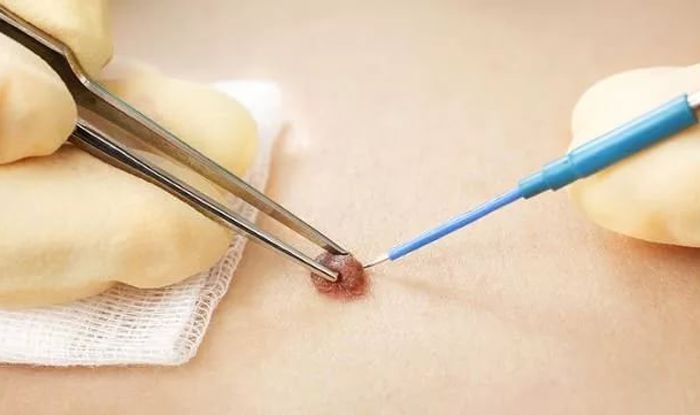
Removal with liquid nitrogen. This option is often used as it has few side effects. For the patient, of course, the most important thing is that after this manipulation there are no scars left. Liquid nitrogen does not cause scarring after removal. The disadvantages include a long period of wound healing.
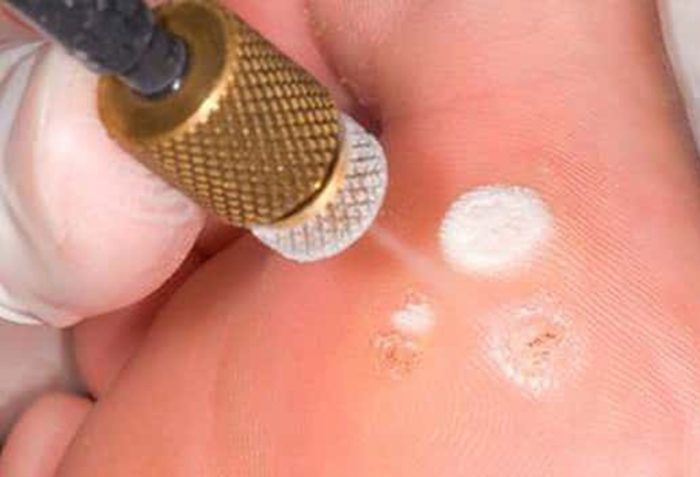
radio wave method. An excellent method, practically does not cause side effects. It is recommended by dermatologists, as it does not cause pain and does not leave scars after wound healing. Possibility of sending material for histological examination.
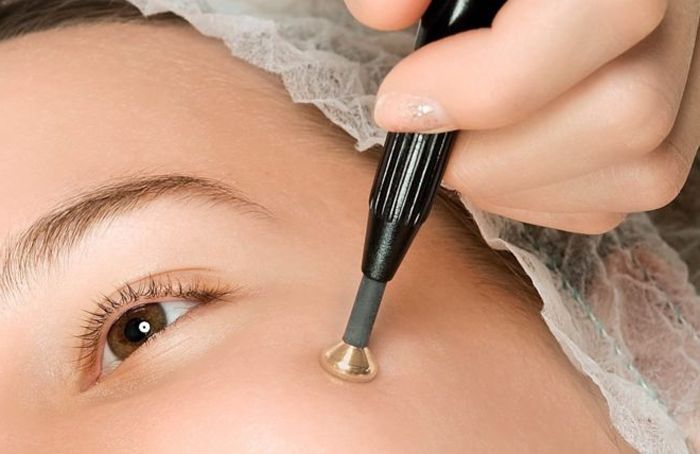
Electrocoagulation. It is performed under local anesthesia. The doctor independently determines the depth of penetration, based on experience in removing papillomas.
Advantages:
- The studied material is sent for histology.
- There is a complete removal of papilloma.
- No infection or bleeding.
Flaws:
- Scars may remain.
- Pigmentation after removal.
- The occurrence of relapses.
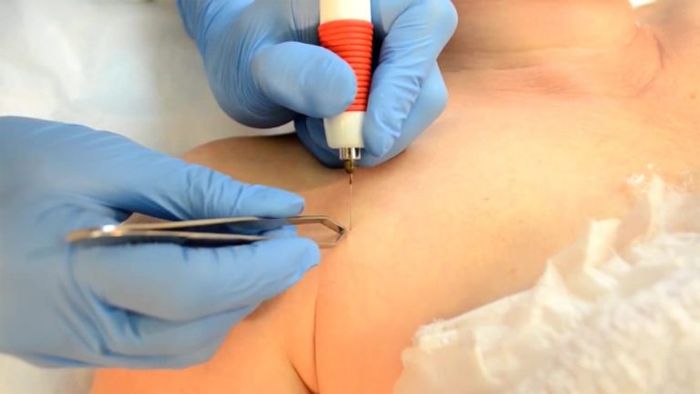
laser removal . This is a fairly commonly used method for removing papilloma and doctors, without fear, use it. Formations under the influence of the laser evaporate.
Pros:
- No bleeding.
- Compliance with sterility.
- Several formations are removed per session.
- The laser copes with large formations.
- Minimal risk of bleeding.
Minuses:
- Pretty painful procedure.
- Burns may occur.
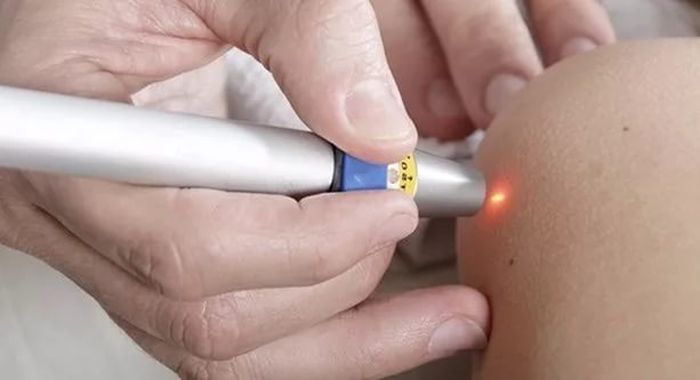
Each of the listed methods of papilloma removal can cause side effects. Only the doctor prescribes to the patient which one is more suitable for him, taking into account the individual characteristics and the degree of neglect of the disease. The most commonly used dermatologist in practice is the use of a laser. It has a gentle effect on skin tissue and causes a minimum number of complications. Find out also what HPV is, deciphering the results of the analysis
Folk remedies
Treatment in this way does not mean that a person will completely get rid of the virus , but it is quite possible to increase your immunity.
- To remove these formations, celandine is used. After a few days, the papilloma will soften and completely disappear.
- Many herbs can be used to boost immunity. Stinging nettle, brew in a water bath and insist for several hours. Use three times a day for 100 grams and the duration will be no more than a month.
- Potato juice will also increase immunity, and consume it 1 tablespoon twice a day for a month, no more.
- Also, the pharmacy sells drugs that increase immunity, they belong to the group of interferons. They can be used in the form of rectal suppositories or capsules.
Prevention
The main route of HPV infection is sexual. Therefore, you should not conduct promiscuity. Even if people protect themselves, an infected partner will transmit the infection through kissing or prolonged skin contact.
For people with reduced immunity, it is recommended to lead a healthy lifestyle. This is hardening, visiting the pool, healthy sleep. By following a healthy lifestyle, your immunity will be resistant to various viruses and, when introduced into the body, will quickly destroy foreign objects.
Hygiene is also an important factor. In public places, the highest risk of danger is contracting this virus. The easiest way for a hyena is to wash their hands with soapy water, this will reduce the risk of transmitting the virus.
Vaccination
Vaccination against HPV is a reliable and, perhaps, the only way to avoid this dangerous infection. Three types of vaccines have been developed, it has been proven that they are effective against strains number 6 and 11. This type provokes the development of oncology in the human body. And other types of viruses have not yet been developed by scientists and immunity is not developed after the vaccine.
- A vaccine called Gardasil 4, this drug was developed in Holland. And it protects against HPV viruses that contribute to the development of cancer.
- The Gardasil 9 vaccine has only recently been developed and is already gaining momentum in use.
- Cervarix manufacturer is Belgium, it is also capable of suppressing certain viruses with type numbers 16 and 18 .
This vaccine contains compounds from the HPV protein. Introducing it into the body, the immune system begins to actively produce antibodies. The chance of getting infected with these types of strains is practically zero. Scientists have not studied the exact duration of the vaccine. It has been studied in humans that for ten years they have not become infected with these types of viruses and it is not recommended to be vaccinated again.
It should be borne in mind that vaccination against the human papillomavirus will not be curative. And if a person has contracted this disease, the vaccine does not remove the virus from the body.
The question is often asked at what age people are vaccinated. Girls can carry out this procedure from the age of 10 to 27. The introduction of the vaccine earlier or later is not considered appropriate.
Boys are vaccinated from 13–26 years of age.
Basic rules for administering a vaccine
The interval between the introduction of 1 and 2 doses is one month. The third dose is administered only after three months.
The method of administration of the drug is only intramuscular. In this case, the introduction of the drug enters the bloodstream and provokes a reaction of the immune system. This vaccine can be combined with other vaccines, but it is recommended to administer it to different parts of the body.
Doctors do not advise pregnant women to administer the vaccine, as it can adversely affect the process of bearing the fetus. There are contraindications to the introduction of this vaccine. These are colds, if a person is in an acute period, vaccination is strictly prohibited.
Complications
- Not a significant increase in body temperature.
- Joint and muscle pain.
- At the injection site, swelling is possible, which can cause itching and soreness.
- Headaches and dizziness.
- Enlarged lymph nodes.
The price for it ranges from 5 thousand rubles. Before the introduction of the drug, it is important to study the expiration date and whether it was stored in the correct conditions.
People who have poor heredity and have cancer in their relatives accept this method of vaccination. It is better to prevent the disease than to treat it later, as the doctors state.
In general, when confirming this diagnosis, you should not panic and become depressed. The main thing is to be observed by a dermatologist and follow all his recommendations. Many HPV patients are afraid if a doctor advises removal.

In some cases, this is simply necessary, because of the risk of injury and if this formation is in a prominent place and does not look aesthetically pleasing. Nowadays, a huge choice of removal uses different devices, and only a doctor can prescribe a method of removal.
This is mainly carried out after a thorough examination of the whole body. The hereditary factor also plays an important role. If a person has relatives and they have been diagnosed with oncology.
Then it is worth taking the initial signs of human papillomaviruses with particular seriousness. To identify onco strains, it is enough to donate blood, and laboratory assistants will determine which group HPV will belong to.
Conclusion
Nowadays, this is a fairly common disease, almost every third inhabitant of the planet is infected with this virus. The disease itself may not manifest itself for a long time. When a person becomes ill or has suffered severe stress, this virus begins to actively manifest itself and these manifestations form on the skin in any part of the body.
If you find formations on the skin, you should immediately seek help from a specialist. He will prescribe the necessary examination, and further treatment. Only the right approach to the treatment of the disease can give positive results.





